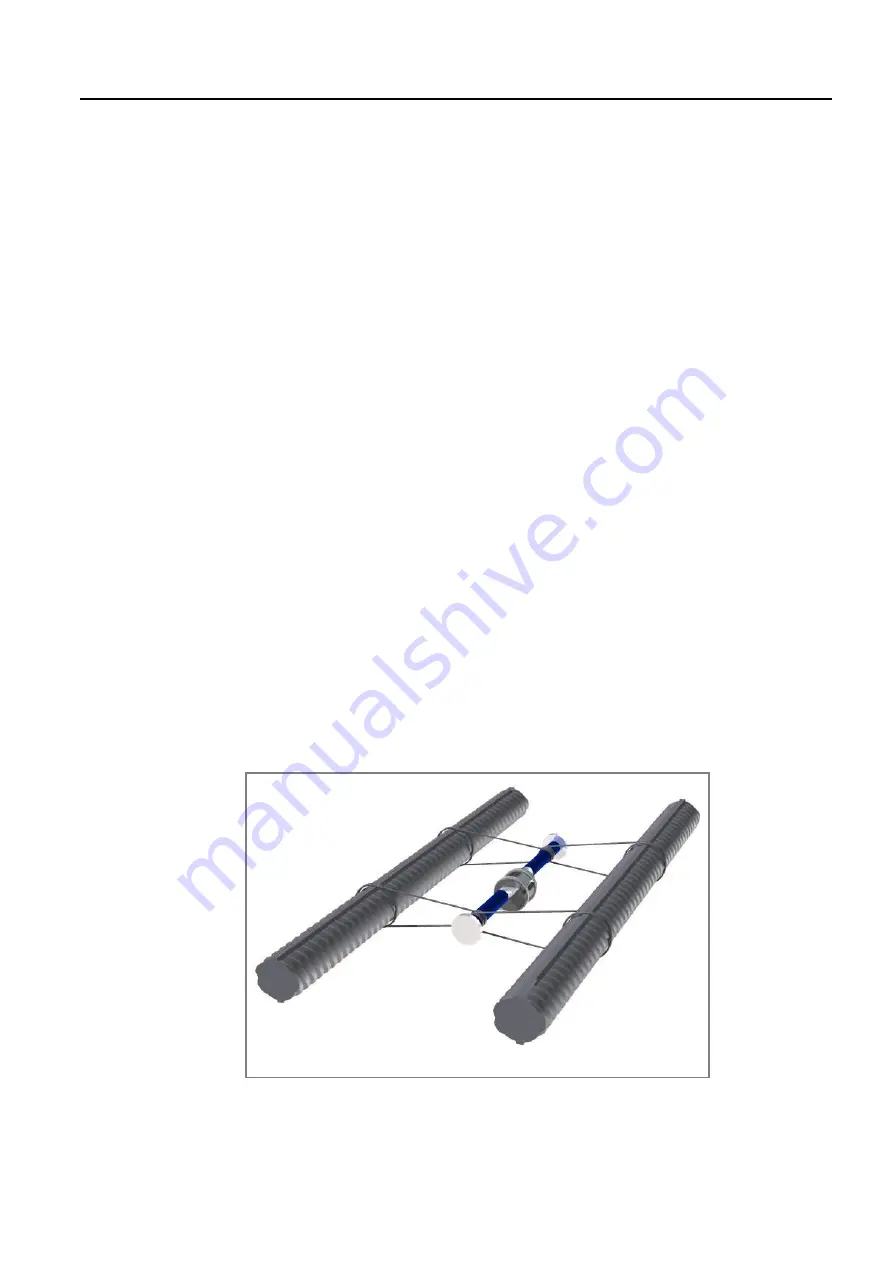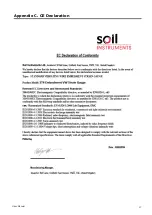
User Manual
5
Section 3 :
Installation
The gauges are supplied sealed and pre-tensioned; no adjustment is necessary or possible. It is good
practice to connect a readout to the gauge and ensure that the reading in free-air is stable and around
the mid-range position. Gentle pressure applied to the gauge ends (i.e. small compression) should
cause the F²/1000 reading to decrease.
The approximate mid position reading of the strain gauge is as follows:
830 Hz
690 F²/1000 (Linear)
12038 Period units x 10
7
For sweep excitation readout units set the sweep range to 400 – 1200 Hz.
3.01
Installation in Concrete
The gauge can be installed in concrete in one of two ways; either by direct casting following attaching
the gauge to, or between rebar, or by pre-casing into a concrete block which is then cast into the main
concrete pour.
When affixing gauges to rebar for direct encasing into concrete, care must be taken to avoid over
range forces being applied to the gauge end blocks by the speed and/or weight of concrete being
poured. Do not tie the gauge too tightly to the rebar as this can move during pour and or curing and
thus damage the gauge. If placing the gauge between rebar, please note the following:-
Wrap self-amalgamating or a few turns of plastic (insulating) tape around the gauge where the
soft wire ties will contact it to act as a shock absorber.
Use only soft iron wire (as used by rebar erectors) and make at most 3 turns around the
gauge, each 3-4 cm from the end blocks either side of the coil.
Loop the wire (by twisting) between the gauge and the rebar, either side to allow for some
expansion movement.
Above; soft iron wire used to secure the gauge between reinforcing bars.
Summary of Contents for 1030
Page 17: ...User Manual 17 Appendix C CE Declaration ...
Page 18: ...User Manual 18 ...
Page 19: ...User Manual 19 ...






































